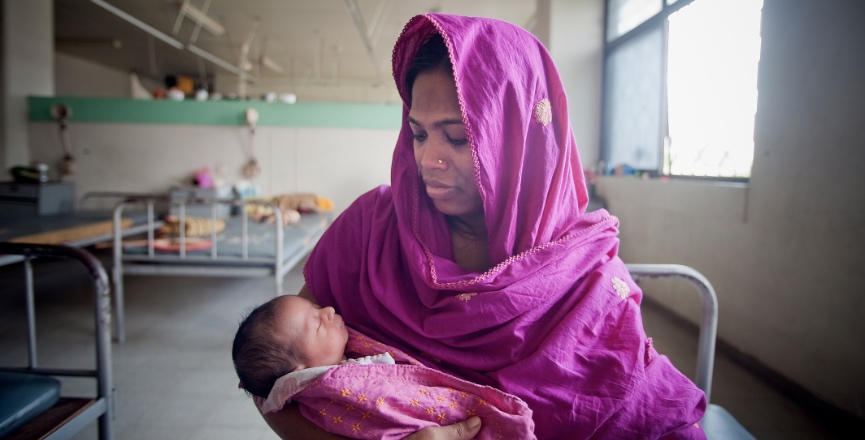This year marks the 50th anniversary of the United Nations agency that deals with birth control, abortion and reproductive rights: the United Nations Fund for Population (UNFPA). In its 2019 annual report, released on Wednesday, April 10, the UNFPA tracks progress over the half century of its existence, and concludes that while there is lots of good news, there is still too much that is bad.
The main good news is that there has been huge progress in women’s and reproductive rights since 1969, the year the UNFPA was founded.
The bad news includes the fact that the most basic of all human activities, becoming pregnant and delivering babies, still poses a significant hazard for hundreds of millions of women and their offspring. In many parts of the world, infant and maternal mortality continue to be frightfully high, exacerbated by the persistent prevalence of child marriage and teen pregnancy.
Increased life expectancy and fewer children per family
On a worldwide scale, life expectancy has increased from 56 years half a century ago to 72 today. The change was most dramatic in the least developed countries, which account for more than a billion out of the world’s total population of 7.7 billion. In 1969 life expectancy in that least developed group was a mere 44 years; today it is 65.
When it comes to reproductive health, family planning, including contraception and abortion, is far more available and accessible than it was 50 years ago.
The availability and use of a variety of methods of contraception has increased significantly. Among women of childbearing age who are married, or in equivalent to marriage relationships, what the UNFPA calls the “contraception prevalence rate” has increased from 24 per cent 50 years ago to 58 per cent today. Again, progress has been most dramatic in least developed countries, rising from one per cent in 1969 to 37 per cent in 2019.
Another notable trend the report notes is that women in most of the world are having fewer children. This has had a number of benefits, including “better health for both women and their children, greater educational attainment for women and increased participation for women in paid employment.”
The result, the report says, has been a “virtuous circle of empowerment, where greater access to reliable ways of controlling fertility has enabled an expansion of rights in other areas, which in turn has further contributed to women’s ability to fully exercise their reproductive rights.”
Too many teen pregnancies and deaths in childbirth
Worldwide, the maternal mortality rate declined from 369 deaths per 100,000 in 1994 to 216 deaths per 1,000 in 2015. But for this indicator there is a huge gulf between the more developed regions of the globe and the least developed countries.
In the more developed regions, which include Canada, the maternal mortality rate dropped from 22 deaths per 100,000 in 1994 to 12 deaths in 2015. In the least developed countries it also dropped, but from an enormous figure of 832 deaths per 100,000 to the still tragically large number of 436 deaths per 100,000.
There was a time when women in the West feared pregnancy, and with good reason.
In 18th-century France, Émilie du Châtelet was a trailblazing intellectual and scientist. Her translations of the works of Newton are still in use. However, when she became pregnant relatively late in life, after having survived three full term pregnancies much earlier, she confided to friends that she was terrified and did not think she would make it this time. She was right. She died giving birth to her fourth child. She was 42 years old.
Most women in the developed world don’t live under that cloud of fear today; but they do in many of the countries that make up what one writer dubbed the “bottom billion.”
The UNFPA report’s data on teenagers who become pregnant and give birth are also disturbing. In the most developed regions, the teen pregnancy rate was 14 per 1,000 in 2018; in the least developed it was 91 per 1,000. It is to those pregnant teenagers, in the world’s poorest countries, that the current U.S. government would deny access to safe abortions. U.S. policy is that it will withdraw funding from any agency, whether based in the United States or elsewhere, that provides abortion information as part of its program of activities.
Gender still counts for too much
Overall, the UNFPA report observes that, despite all the advances of the past half century, gender still matters in a big way as a determining factor for health and well-being outcomes.
“Of all the obstacles to the achievement and exercise of human rights, including reproductive rights, few have proven to be as challenging to overcome as those based on gender,” the report states.
It goes on to describe a “web of expectations and norms within a society that together define what are appropriate male and female behaviours.”
Those expectations are roles “learned, internalized and reinforced” and have “a profound influence on every domain of life.”
The UNFPA recognizes that “expression of gender varies across contexts,” but it insists that “in virtually all societies, gender has been defined in ways that subordinate women (and those who are gender non-conforming) to men, imbuing definitions of masculinity and femininity with different levels of power and social authority.”
The net result of these differences, in most societies, has been “a systematic disempowerment of women and non-gender-conforming groups, who find their autonomy and ability to freely make decisions for themselves limited across almost every aspect of life.”
And so, as the world becomes more equitable and just in some ways, it remains unjust, unfair and cruel in many others.
Karl Nerenberg has been a journalist and filmmaker for more than 25 years. He is rabble’s politics reporter.
Photo: UN Photo/Kibae Park/Flickr
Help make rabble sustainable. Please consider supporting our work with a monthly donation. Support rabble.ca today for as little as $1 per month!



